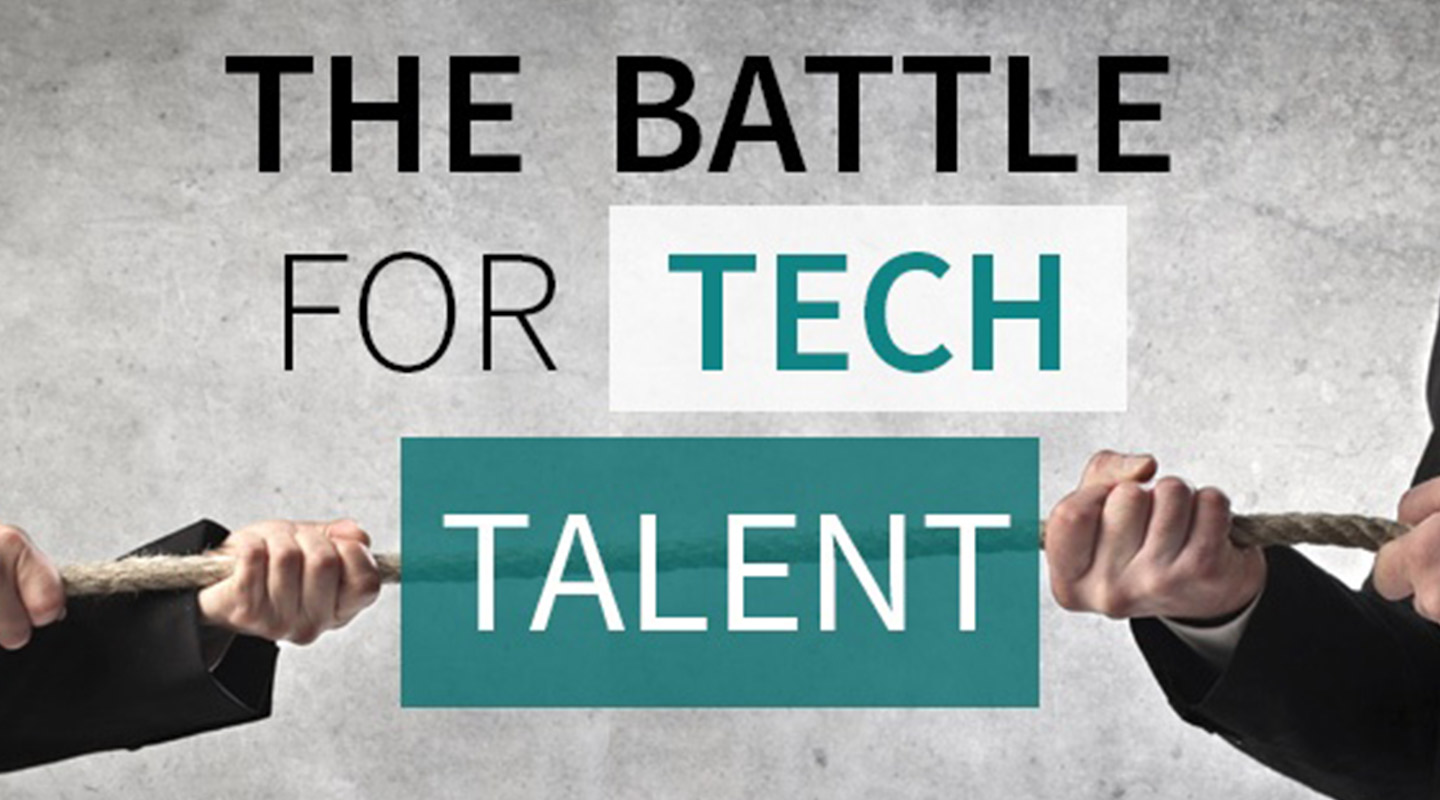The tech talent battle is waging and at this point insurers are not faring well. The competition is stiff across all sectors for much in demand skill-sets needed for success in the digital age. The problem for insurers is part perception, part reality. Insurance is not on the radar of millennials as an exciting career, and many insurers are still transitioning from a legacy technology. Where is the cool stuff that fresh and smart tech talent wants to work with? Insurers will need to scrutinize their technology choices and strategies if they want to attract critical talent to scaffold the next century of insurance.
Taking on the Tech Titans
Who are the top tech talent draws? According to a recent study by hiring platform provider Paysa, it’s the usual suspects. Uber is number one, followed by Google, Facebook, Amazon, LinkedIn and Salesforce.
A recent article in Insurance Networking News (INN) explores the Paysa list to see how many insurers were listed in the top 200 employers:
Some insurance companies – mainly health insurers — did pop up in the list, starting at 50th place. These include Unitedhealth Group (#50), Willis Towers Watson (#97), Kaiser Permanente (#147), Anthem (#156), and Molina Healthcare (#168). That’s five insurers, or 2.5% of the top 200. No P&C carriers appear on the list. And, as a matter of fact, very few financial services companies in general made the list.
INN columnist Joe McKendrick writes that insurers need top tech talent to identify, build, acquire and improve the systems that will deliver new digital capabilities, and makes this observation:
One of the best tools to recruit and retain developers and analysts is enabling them to work with new technologies, and to be able to work closely with the business.
The accuracy of this observation resonates with our experience as a software solution provider and with our customers.
Tech Keeps Insurers Attractive at the Core
At EIS, the mantra of “staying modern” has been central to the design DNA of our solutions. Driving that idea is the desire to provide long-term, sustainable value to customers. A big part of achieving it is recognizing that the best tech talent and new recruits do not want to be sidelined by old school approaches that drive their careers into a dead end. They are looking for the latest and greatest technologies that keep them at the leading edge.
These technologies are revolutionizing both core system software development and delivery. Examples include:
- Software solution development:
- Creating open systems using non-proprietary, open source technologies, standards and language that appeal to a large global source of talent.
- Exposing and extending core system capabilities to drive insurer participation in the digital ecosystem through omnichannel and mobile engagement leveraging micro-services, rest APIs, IoT and related technologies.
- Combining core data and big data to deliver predictive modeling and customer insights leveraging technologies like Hadoop and Cassandra.
- Solution delivery:
- Leveraging the practices of hi-tech leaders like Amazon and Netflix to achieve secure, scalable and adaptable cloud deployments.
- Leveraging new continuous integration/continuous delivery (CI/CD) processes to accelerate software delivery while improving quality.
Talent Fuels Innovation
Technology-forward insurers get it. One EIS customer who recently enabled EIS Suite in a state-of-the-art cloud environment and is using the latest software delivery practices to accelerate expansion and adoption of the platform understands the score. Their top priority now is gaining the tech talent fully exploit their platform and drive business value. Part of the attraction for new talent is the insurer’s adoption of a flatter decision-making hierarchy that empowers developers to own delivery of business capabilities without the usual hand-offs.
New Gen is Now
Farmer’s CIO Ron Guerrier recently told INN “…that insurance presents a unique opportunity to do some really interesting things with technology like the Internet of Things, autonomous cars and blockchain. There’s an energy and excitement about this ‘What if?’ and ‘Why not?’”
Many share Guerrier’s excitement. To underscore the opportunity for tech talent, very large budgets are now at the disposal of insurers. Celent’s 2016 insurance IT budget forecast is a $185 billion spend of which a growing percentage of 43 cents of each dollar is dedicated to “implementation of new projects including software, development staff and services.”
Capturing the Imagination
Firing up the insurance systems needed for the digital transformation will require firing up young imaginations.
The task is two-pronged. One, the industry can work to disabuse tech talent of the idea that insurance is staid and slow on the digital uptake with examples of the leading edge work on data, analytics, and Internet of Things that are hot in the market right now. And two, insurers can make advanced technology choices that not only enable innovation and growth in the emerging digital ecosystem but provide the right seedbed for nurture (e.g., innovation labs) and promotion of skills and insurance careers for tech’s best talent.
Jim Caruso is Executive Vice President, Worldwide Professional Services at EIS.




